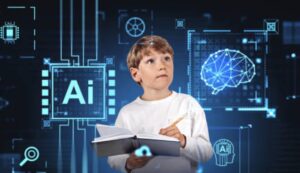The world is undergoing rapid change with the arrival of digital technology. The education industry is no stranger to this movement—being at the forefront of transformation with the adoption of new practices that allow teachers to better facilitate an active learning environment for their students.
While iPads and tablets uncover a new dimension of learning for students, valuable frameworks like the Early Years Learning Framework also effectively benefit from the integration of technology.
Here are the various ways technology transforms early childhood education:
1. Using Technology to Become More Collaborative
Teachers can mediate students’ learning and facilitate digital storytelling with apps like iMovie, Explain Everything, and Book Creator. Through those mediums, students will effectively be given the power to communicate their ideas via technology. In this way, teachers become knowledge brokers who filter information for students by guiding them through their learning process.
Teachers can mix learning styles for a more effective result. For instance, students who learn better through visual cues and other senses will be encouraged by rich multimedia elements that can be rendered using technology.
But the best part is that children are allowed to present their understanding of ideas in ways they feel comfortable with, while simultaneously working in collaboration with others.
2. Promotes the Reggio-Emilia approach
The Reggio-Emilia approach is a philosophy that values the child as a capable and competent individual who’s rich with knowledge and wonder. Essentially, it puts the child at the forefront of the learning process. With the new normal shaking up the way education is done, this approach believes in the child’s central authority over their own learning.
This setting promotes encouragement and interaction of others, endorses the explorative aspects of their creativity, and provokes innate curiosity – enabling the child’s ability to become smart and competent future leaders. Grounded on independence, this setting excels with the rapid shift towards technology since the digital age allows the student to explore multiple ways of paced learning through various doors.
3. Opens a New Door with Play-Based Learning
Geoguessr, Kahoot!, and Minecraft are just some of the game-based learning tools that are improving day-to-day teaching methods. With play based learning (you can learn more here), educators take the focus away from structure, and instead let children explore independently.
For instance, Minecraft can be used to create a world for students and teachers alike to explore and discover new things with each other’s help. Children will enjoy the freedom to make their own choices, while also using this technology as a tool to enhance their creativity.
Kahoot! assists teachers in monitoring students’ progress across a topic by checking their topic understanding. According to Science Direct, 30% of students improved their test scores by up to 55% with competition-style games like Kahoot!
Geoguessr is another great example that can aid students by pinpointing their exact geographical locations, and then asking them to identify the location they are in. With these types of tools at hand, teachers can execute campaigns to provide fresh and dynamic modes of facilitating learning.
4. Disseminate Information Effectively Through Technology
The days of the whiteboard are almost gone, replaced by popular screen casting tools that allow teachers to show students vivid representations of what they are trying to teach.
These tools can help toddlers better understand ideas in a more comprehensive way. The ease of Internet accessibility and the plethora of software that assist the learning process grant teachers the ability to take on more sophisticated techniques in a dynamic learning environment.
For instance, Google Classroom is a cloud-based classroom that gives teachers the liberty to create, organise, and share educational materials with their students. With these tools, they can also develop digital literacy skills by allowing students to work individually or collaboratively in an online environment.
Transitioning from whiteboards to technology is beneficial for both teachers and learners; it allows them to gain more flexibility and freedom when teaching, while also enhancing their skills in search of answers.
5. Emphasise Social Skills Through Technology
As toddlers are still developing their fine motor skills, they can use technology like touch screen devices as a tool to take turns and work collaboratively with others.
This provides an avenue for them to communicate with other kids their age and develop new friendships—which is a critical point in their social trajectory and ability to interact with others.
6. Help Toddlers Learn Basic Academic Skills
One of the main uses of technology in the classroom is giving the students a platform to learn more effectively. A plethora of learning apps directed to toddler or early education students riddle the app market, helping them absorb information even beyond the classroom.
Academic skills that can be honed from technology include counting, telling colours apart, sounds, matching shapes. Technology can help students learn at their own pace too. If a student makes a mistake, technology allows them to review and redo their progress without holding back other students—creating a much more customisable approach.
7. Promotes at-home learning
Technology allows toddlers to gain information and sources online. Whether they are learning about dinosaurs, learning how to spell, or trying to figure out how many seconds there are in an hour—toddlers can access educational content on most topics through apps or research.
While parents must also play a vital role in their child’s learning process, technology has made it easier than ever for toddlers to absorb and learn topics without the teacher’s immediate guidance.



